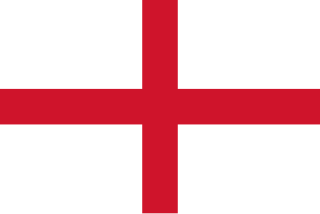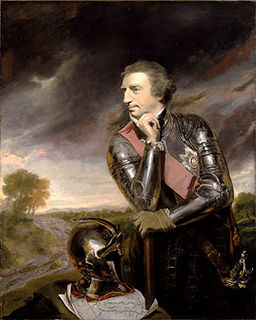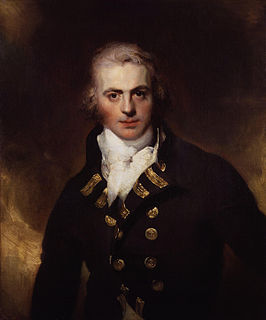
Admiral Sir Graham Moore, (1764–1843) was a Royal Navy officer. As a junior officer he took part in the Great Siege of Gibraltar during the American Revolutionary War. As captain of the frigate Melampus, he took part in the Battle of Tory Island in October 1798, capturing the French frigate Résolue two days later, during the French Revolutionary Wars. He went on to be First Naval Lord, then Commander-in-Chief, Mediterranean Fleet and, finally, Commander-in-Chief, Plymouth. He was the younger brother of General Sir John Moore.
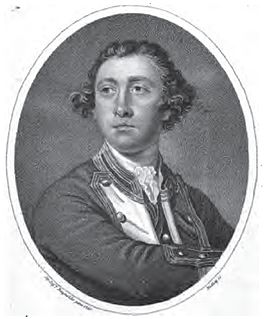
Sir John Lockhart-Ross, 6th Baronet, known as John Lockhart from 1721 to 1760, was an officer of the Royal Navy who saw service during the War of the Austrian Succession, Seven Years' War, and the American War of Independence, and served for a time as a Member of Parliament.

Admiral James Saumarez, 1st Baron de Saumarez, GCB was an admiral of the British Royal Navy, notable for his victory at the Second Battle of Algeciras.
Admiral Sir William Wordsworth Fisher was a Royal Navy officer who captained a battleship at the Battle of Jutland and became Commander-in-Chief of the Mediterranean Fleet. Arthur Marder wrote that he was "the outstanding admiral of the inter-war period".

Admiral Alexander Hood, 1st Viscount Bridport, KB was an officer of the British Royal Navy during the French Revolutionary Wars and Napoleonic Wars, and the brother of Admiral Samuel Hood, 1st Viscount Hood.
Rear-Admiral Sir Richard Bickerton, 1st Baronet was a British naval officer who finished his career as a rear admiral in the Royal Navy and was ennobled as the first Baronet Bickerton of Upwood. He served in several naval engagements, and died Commander-in-Chief, Plymouth in 1792. His son Richard Hussey Bickerton, who likewise rose to flag rank in the Royal Navy, succeeded to the baronetcy following his death.
James Alms was an officer of the Royal Navy who saw service during the War of the Austrian Succession, the Carnatic and Seven Years' War and the American War of Independence, rising to the rank of post-captain.

George Edgcumbe, 1st Earl of Mount Edgcumbe, PC was a British peer, naval officer and politician.

Admiral of the Fleet Sir Cecil Burney, 1st Baronet, was a Royal Navy officer. After seeing action as a junior office in naval brigades during both the Anglo-Egyptian War and the Mahdist War, he commanded a cruiser in operational service during the Second Boer War. As a flag officer he commanded the Plymouth Division of the Home Fleet, the 5th Cruiser Squadron, the Atlantic Fleet and then the 3rd Battle Squadron.
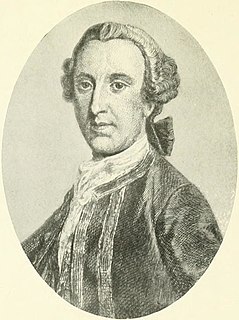
Admiral Sir Peircy Brett was a Royal Navy officer. As a junior officer he served on George Anson's voyage around the world and commanded the landing party which sacked and burned the town of Paita in November 1741. During the Jacobite rising Brett saw action on the 9 July 1745, when as captain of the fourth-rate HMS Lion he exchanged fire with the French ships Elizabeth and the Du Teillay: the Du Teillay at the time was carrying Charles Edward Stuart to Scotland with supplies and funds to support his cause. Brett also commanded the third-rate HMS Yarmouth at the First Battle of Cape Finisterre in May 1747 during the War of the Austrian Succession. He commanded HMS Cambridge on the North America and West Indies Station during the Seven Years' War and later became Senior Naval Lord. He was also a Member of Parliament, representing the constituency of Queenborough from 1754 until 1774.
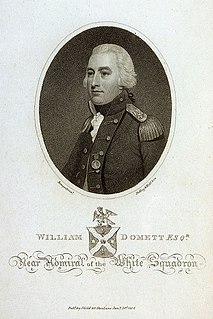
Admiral Sir William Domett, GCB was a senior officer of the British Royal Navy who saw extensive service during the American Revolutionary, French Revolutionary and Napoleonic Wars. Throughout his career, Domett was under the patronage of Alexander Hood, later Lord Bridport. During his service Domett was appointed as flag captain by several admirals, and saw action numerous times in this capacity, including seven years in command of HMS Royal George. He went on to be First Naval Lord and then Commander-in-Chief, Plymouth during the closing stages of the Napoleonic Wars. Later in life, ill-health forced early retirement and Domett retired to his country estate in Hawkchurch, Devon, close to Lord Bridport's estates.
Admiral Hugh Pigot, of Wychwood Forest in Oxfordshire, was a Royal Navy officer. He commanded York at the reduction of Louisbourg in June 1758 and commanded Royal William at the capture of Quebec in September 1759 during the Seven Years' War. He went on to serve as Commander-in-Chief of the Leeward Islands Station during the American Revolutionary War and then became First Naval Lord. He also served as a Member of Parliament.

Sir John Jennings was a Royal Navy officer. He commanded HMS Kent at Cadiz and Vigo in 1702 during the War of the Spanish Succession. He went on to be Commander-in-Chief of the Jamaica Station, then Senior Naval Lord and finally Governor of Greenwich Hospital. He also served as a Member of Parliament.

Admiral of the Fleet Sir William Rowley KB was a Royal Navy officer. He distinguished himself by his determination as commander of the vanguard at the Battle of Toulon in February 1744 during the War of the Austrian Succession. He went on to be Commander-in-Chief of the Mediterranean Fleet in August 1744 and successfully kept the Spanish and French fleets out of the Mediterranean area but was relieved of his command following criticism of his decision as presiding officer at a court-martial.
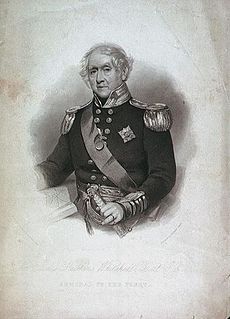
Admiral of the Fleet Sir James Hawkins-Whitshed, 1st Baronet was a Royal Navy officer. He saw action in command of a sloop at the Battle of Martinique during the American Revolutionary War. He went on to serve under Sir John Jervis in the Mediterranean and took part in the battle of Cape St. Vincent during the French Revolutionary Wars.

James Richard Dacres was an officer of the Royal Navy who saw service during the Seven Years' War, the American War of Independence and the French Revolutionary and Napoleonic Wars. He eventually rose to the rank of Vice-Admiral.
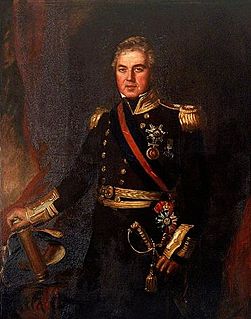
Admiral Sir Thomas Briggs was an officer of the British Royal Navy who served during the French Revolutionary and Napoleonic Wars, and went on to be Commander-in-Chief, Portsmouth.
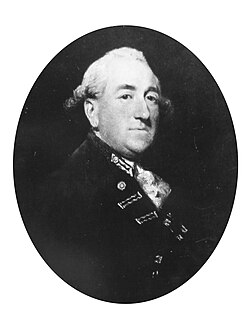
Rear-Admiral John Leveson-Gower was a Royal Navy officer and politician from the Leveson-Gower family. As a junior officer he saw action at the Battle of Lagos in August 1759 during the Seven Years' War. As captain of HMS Valiant he was present at the Battle of Ushant on 17 July 1778 during the American War of Independence. He went on to be a junior Lord of the Admiralty and then First Naval Lord. He also sat as Member of Parliament for several constituencies.
Admiral Joseph Bullen was an officer of the British Royal Navy who served during the American Revolutionary, French Revolutionary and Napoleonic Wars.
